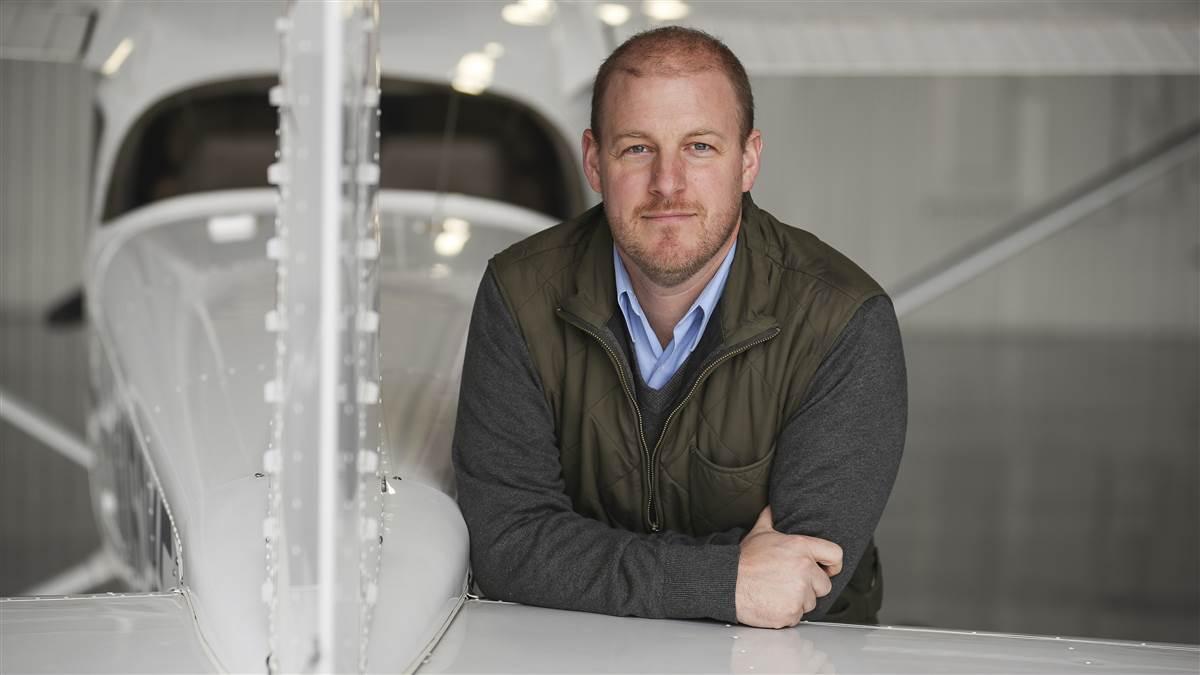Right Seat
Winter woes

Senior Content Producer Ian J. Twombly prefers New England’s deep snows over Maryland’s icy ramps.
[email protected]
As a child I had always loved New England winters. We spent our days sledding, snowmobiling, and throwing snowballs at each other. To say winter lost its luster that first year in New Hampshire is an understatement. Wind chills well below zero and early mornings spent preheating engines and scraping frost had a way of taking the fun out of the season. It’s funny how perspectives change when you’re the one shoveling.
The year I spent teaching at the now-defunct Daniel Webster College in Nashua was a great education on how to operate safely in winter, how to keep students safe, and how to treat the airplanes well.
Early mornings spent scraping frost had a way of taking the fun out of the season.
Daniel Webster had a Part 141 certification, which meant it had an approved book of operational specifications we were required to follow. There were solo and dual training limits on wind, runway braking action, temperature, ceiling, and visibility. As instructors trying to make it to the airlines, we would stew as the tower reported poor braking action day after day for what looked to us like a mostly dry runway. So we had to sit for days, even when the weather was severe clear. It seemed to us as if the controllers were looking for a break from the intensity of trying to control a traffic pattern slammed with student pilots.
When the visibility and braking action were good enough to fly, those winter mornings often were spent scraping frost off the wings. The school had a heated hangar, but not all the airplanes fit inside. So we’d often wake up to find a row of Cessna Skyhawks that looked like Rudolph with their cowlings wrapped in bright red blankets.
For this month’s cover story, “Out in the Cold,” writer W. Scott Olsen donned a beanie, wrapped up in a heavy jacket, and strolled into the flight school in Fargo, North Dakota, to talk about what truly frigid weather does to people and airplanes. Nashua, New Hampshire, may get cold and snowy, but Fargo is an entirely different kind of cold.
What Olsen learned—and what all pilots learn when they brave the weather—is that winter flying can be glorious. Low temperatures don’t allow the atmosphere to hold as much moisture, so visibility—always a summer problem east of the Mississippi—can become almost unlimited in winter. Dense air improves engine and wing performance. And the lack of thermals usually means the air is smoother.
One of the challenges of learning to fly in a particular area is that you get to know that area’s weather really well, and you learn only the theoretical issues associated with flying elsewhere. Most students in Arizona or Florida will never experience droning along in solid instrument conditions during training for the instrument rating. And students in the Northeast can’t begin to know what it’s like to be grounded in the middle of the day, as students in the desert Southwest often are.
Even if you’re reading this between lessons on Miami’s South Beach, make it a point to try your hand at some cold weather flying the next time you’re in the Northeast, Upper Midwest, or Mountain West in the winter. Only then will you understand why it’s important to keep an old credit card in your wallet, and two pairs of gloves in your flight bag.



